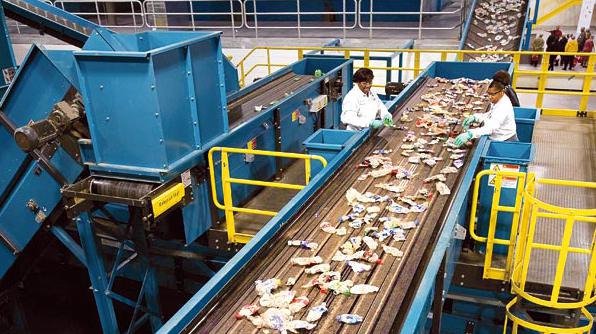
A bottle of Coca-Cola is an instantly recognizable sight for most people around the world. Given that as of 2011, roughly 61% of our packaging globally came in the form of PET plastic, it’s very likely that the bottle that a person is seeing is a PET bottle. Though most of us are intimately familiar with what these curvy plastic bottles look like, what you may not know is that the clothing you’re wearing, the fabric of the chair you’re sitting on or the carpet beneath your feet may all have been PET bottles in a previous life. In this installment of our two-part series about the lifecycle of our most common packaging materials, PET and aluminum, we will take a closer look at how PET bottles are manufactured, the benefits to using these bottles, and what becomes of them afterwards.
Polyethylene terephthalate or PET is a plastic used in a variety of packaging, from take-out containers to peanut butter jars to bottles of Coca-Cola products. PET packaging can either be thermoformed from sheets or blow molded to create narrow mouthed containers like bottles. By the late 1990s there was a movement in the packaged foods industry away from glass and towards PET, in large part driven by PET’s merits as a safe and shatterproof packaging option. The material is also significantly easier to work with than glass, allowing for innovative packaging designs. Another benefit to PET is that it is of course significantly lighter than glass, substantially reducing both the fuel requirements and greenhouse gas emissions during transportation of packaged product.

If we look to the latter half of a PET bottle’s lifecycle, we clearly see its next great asset: PET is the most widely recycled plastic in the world. Not only is it highly recyclable, PET is accepted by virtually every recycling program in Canada and the infrastructure behind recycling it is very well established, and recycled PET is in high demand. In 2013, 1.5 billion pounds of recycled PET material (or rPET) was used in the manufacture of Canadian and US products. From clothing and carpeting to fleece blankets and fiberfill sleeping bags. It is a good thing to that rPET is so in demand because according to a 2010 Life Cycle Inventory Study, every pound of rPET flake used reduces energy consumption by 84% and greenhouse gas emissions by 71% when compared with newly produced PET material.
After four years of painstaking research and experimentation, Emeco finally unveiled the 111 Navy Chair. The 111 Navy Chair borrows its design from Emeco’s famous aluminum 1006 Navy Chair and its name from the 111 PET plastic bottles needed to make it. Since their unveiling in 2010, Emeco’s 111 Navy Chair is responsible for diverting over 17 million plastic bottles from landfills and counting.